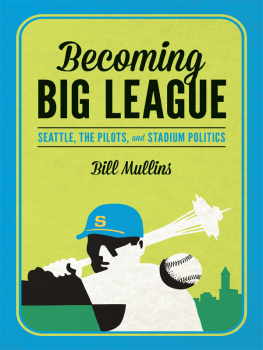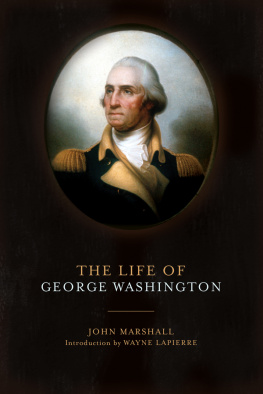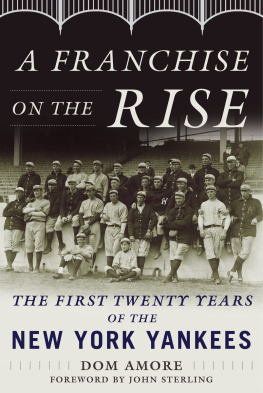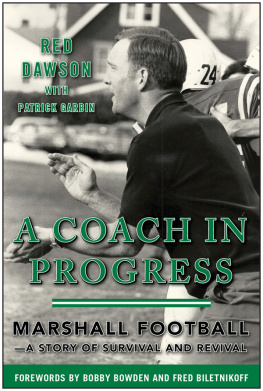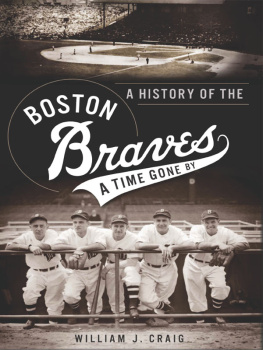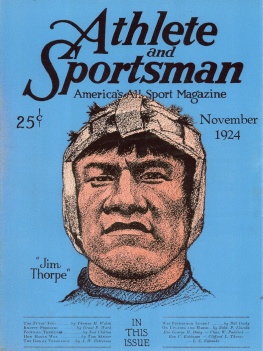George Preston Marshall, the Integration of the Washington Redskins, and the Rise of a New NFL
Cover designed by University of Nebraska Press; cover image The Cleveland Press Collection, Michael Schwartz Library, Cleveland State University
The publisher does not have any control over and does not assume any responsibility for author or third-party websites or their content.
George Preston Marshallthis name kept popping up as I researched the life of Art Rooney for an earlier project. Marshallwell, all I knew of him previously was that his Washington Redskins were the last major sports franchise to integrate.
Indeed Marshall the bigot is an enduring legacy, but there was much more to the man than this unfortunate memory. He was a showman, a sportsman, a man of great foresight and imagination. The more I learned, the more intrigued with him I became. But was Marshall worthy of a full-scale biography? Perhaps, but in Marshall I saw something else. He reminded me of the great baseball folk figure Bill Veeck. Like Veeck, Marshall seemingly popped up whenever a significant issue confronted his sport. He was there at the ready, with an opinion and a solution to whatever problem might arise.
I began to envision a story in which Marshall played the lead, a role as an individual who finds himself immersed in every vital issue confronting his sport. Previously I have chronicled some of the sports worlds great characters, including Branch Rickey, Paul Brown, and Rooney. Those figures are tough acts to follow indeed, but Marshalls intrinsic pomposity and unflappable verbosity make him a writers dream.
But Marshall is just a part of the tale told here. Interwoven throughout the narrative are the stories of numerous players who crossed his path. Commissioners Bert Bell and Pete Rozelletwo men essential to the rise of the National Football Leagueare here. So are Shirley Povich and Sam Lacy, two journalists who wielded the power of the pen to poke and compel. There is the politician Stewart Udall, who used his position of authority to make this country more democratic. And then theres a football player, Bobby Mitchell, who wanted nothing more than an equal opportunity to ply his skills in his chosen profession.
This story plays out against a backdrop of a changing social landscape. The Brown v. Board of Education decision was handed down by the Supreme Court of the United States on May 17, 1954; this monumental event was followed three years later by the Little Rock Nine and the integration of Little Rocks Central High School. And in 1960 the election of John F. Kennedy as the countrys thirty-fifth president offered promise of a more progressive society.
Change was indeed in the air, but this change was met with great resistance on the streets, in the schools, and on the playing field.
I was born into this world Irish, Catholic, and a Pittsburgherthree circumstances one can never escape. Im three generations removed from the Old Country, a long since lapsed Catholic, and nearly four decades gone from the Iron City. Still, if asked, I would describe myself as an Irish-Catholic Pittsburgher. That and a Steelers fan.
My heritage played a direct part in several of my earlier works. Art Rooney and Billy Conn were natural subjects for me, and I enjoyed every moment I spent with them.
Paul Brown, however, was not a likely fit for me. The founding father of the Browns and Bengals was certainly deserving of a full-scale life study, but there was one aspect of his career that intrigued me more than any other: his role in ending professional footballs unofficial ban on black players. The story of Marion Motley and Bill Willis drew me in. Much has been written about Jackie Robinsons historic arrival in Brooklyn, and deservedly so, but the pioneers in football have been virtually overlooked in comparison.
How was it possible that sixteen years after Willis and Motley the Redskins still remained an all-white outfit? This disturbing fact fascinated me, and I began to look into the events that surrounded the integration of the Redskins. Bobby Mitchell and George Preston Marshall were the leading stars in the tale, but the backstory was brimming with equally captivating characters.
Today the NFL is a behemoth. Practically twelve months a year the league pervades the news. If its not the college draft, its the OTA s (whatever the hell those are) or free-agent season. The Super Bowl, the pinnacle of the football season, has become such a spectacle that the game is nearly unwatchable.
How did we get to this point? That is the genesis of this book.
Personally I have to say I agree with George Marshalls assessment of the NFL more than half a century ago: The NFL cant encompass the world. Its not that important.
It may not be that important, but the NFL damn near encompasses the world. I have to believe that if George Marshall were still with us he would love every moment of this dominance.
A book of this nature would not be possible without the assistance and support of many, including Barbara Jones, George Preston Marshall Foundation; Jon Kendle, Pro Football Hall of Fame; Alexandria Caster, University of Arizona; Dave Kelly, Library of Congress; Paul Dickson (Paul, thanks for the advice and encouragement); Derrick Kenney, Capital Press Club; Zack Bolno, Washington Redskins; John Konoza; Michael J. Jones, Western Illinois University; Stephen Plotkin, John F. Kennedy Presidential Library and Museum; Michael Henry, University of Maryland; Forrest Gregg (thanks for your help and enthusiasm); Joseph D. Schwarz, National Archives; Beth Shankle, National Press Club; Jim Limpert, Washingtonian; Melissa Taing, John F. Kennedy Presidential Library and Museum; Roberta Saltzman, Dorot Jewish Division, New York Public Library; Amber McDowell and Donda Morgan, from Senator Tom Udalls office; and Michele Casto of the Martin Luther King Jr. Memorial Library in Washington (thanks for everything, Michele).
I owe a special debt of appreciation to Derek Gray, archivist of the Washingtoniana Collection at the Martin Luther King Jr. Memorial Library in Washington. Thanks, Derek, for your support and, even more important, your patience.
I owe special thanks to everyone who spoke with me about this particular era in Washington DC and NFL history, including Robert Ames Alden, Marti Barry, Upton Bell, Charlie Brotman, Mike Brown, Victor Gold, Steve Guback, Ron Hatcher, Dick Heller, Tom Hurney, Ed Kiely, Myra MacPherson, Thomas Nordlinger, Bill Nunn, Bill Peeler, Art Rooney Jr., Theodore Sorensen, John Thomas, Sterling Tucker, Senator Tom Udall, Dick Victory, Russ White, and Martie Zad.
And finally, my bride Mickie... thanks for the support and encouragement. You and me, its a beautiful thing this life we have.
Burgundy, Gold, and Caucasian
I have nothing against Negroes, but I want an all-white team.
These words were spoken by George Preston Marshall to a Pittsburgh Courier reporter in 1950.
Marshall also famously once said, I believe in states rights, both in government and in football.
Years later, after every NFL team had integrated except his own, Marshall spoke with



